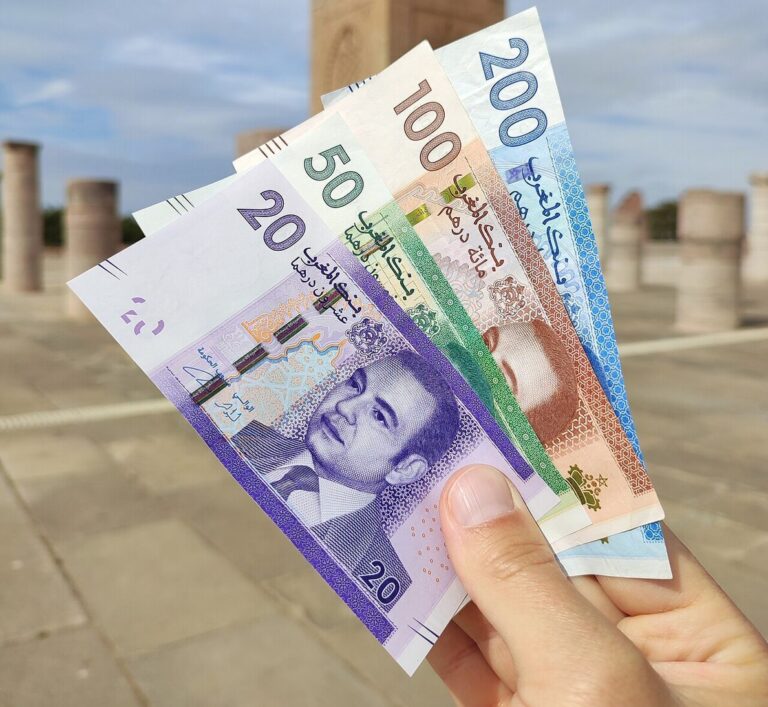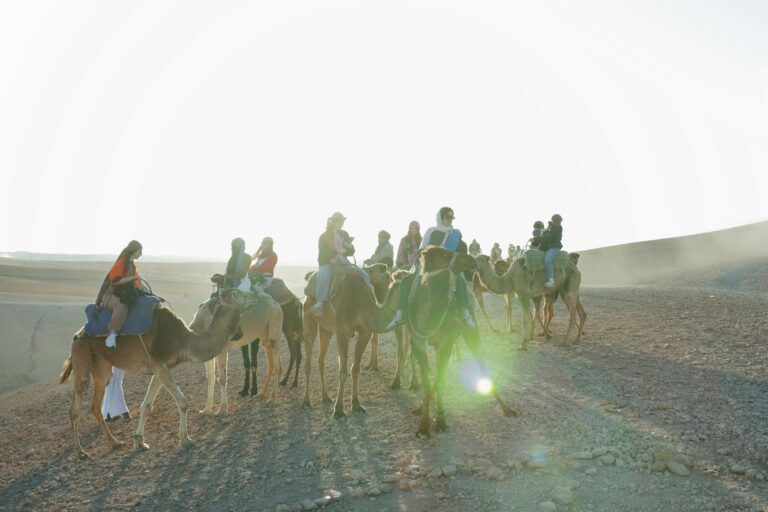
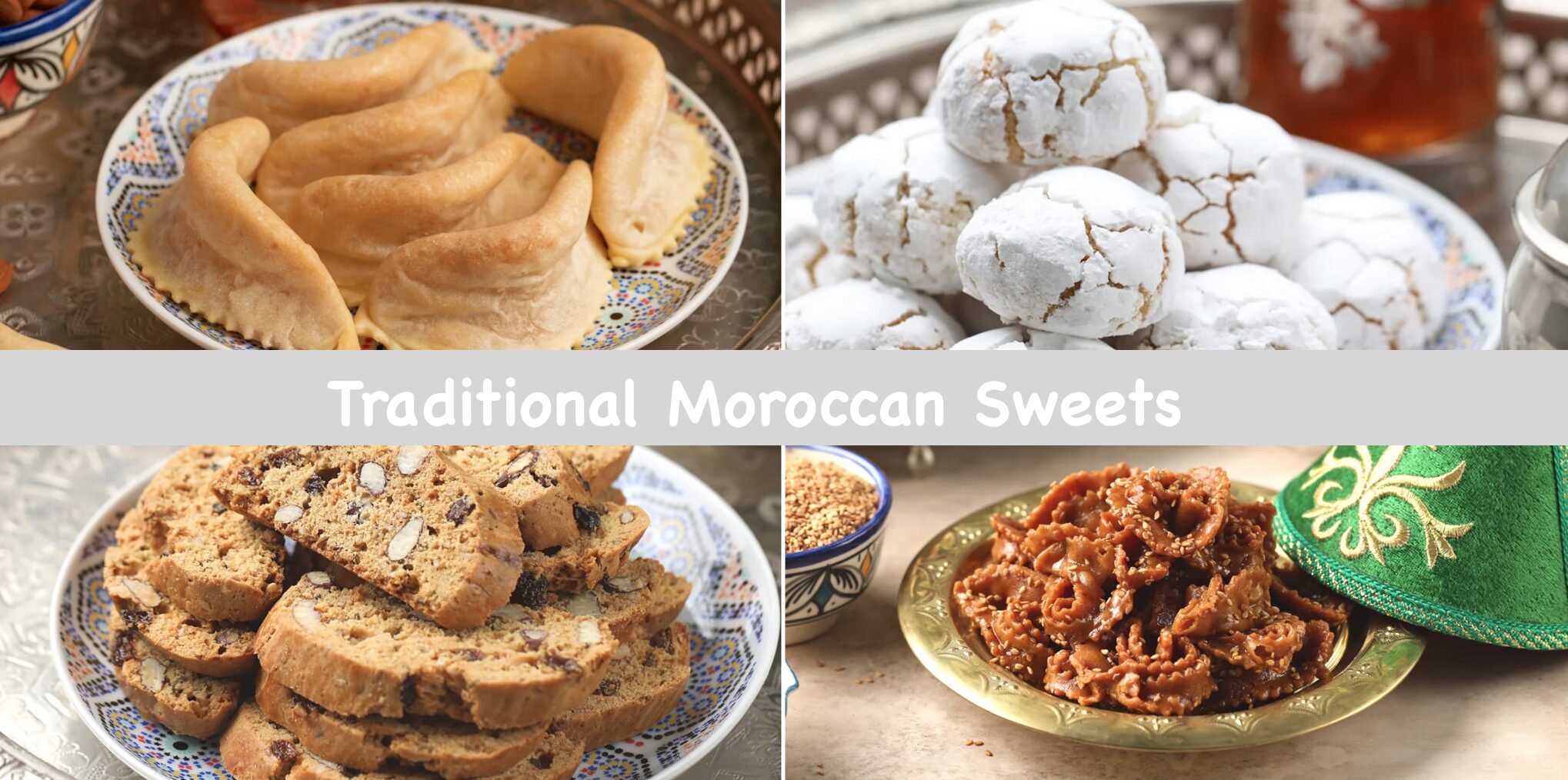
When you think of Morocco, your senses might drift to bustling souks, vibrant textiles, and the hypnotic call of the muezzin. But one experience that truly captures the soul of Morocco is its desserts. Traditional Moroccan sweets: the taste of past and present is not just about indulgence—it’s a delicious journey through centuries of history, culture, and hospitality.

In this post, we’ll explore the fascinating world of Moroccan desserts, from ancient confections passed down through generations to modern takes that still honor their roots. If you’re planning a trip to Morocco, don’t just taste the sweets—discover the stories behind them.
The Sweet Side of Morocco: A Cultural Overview
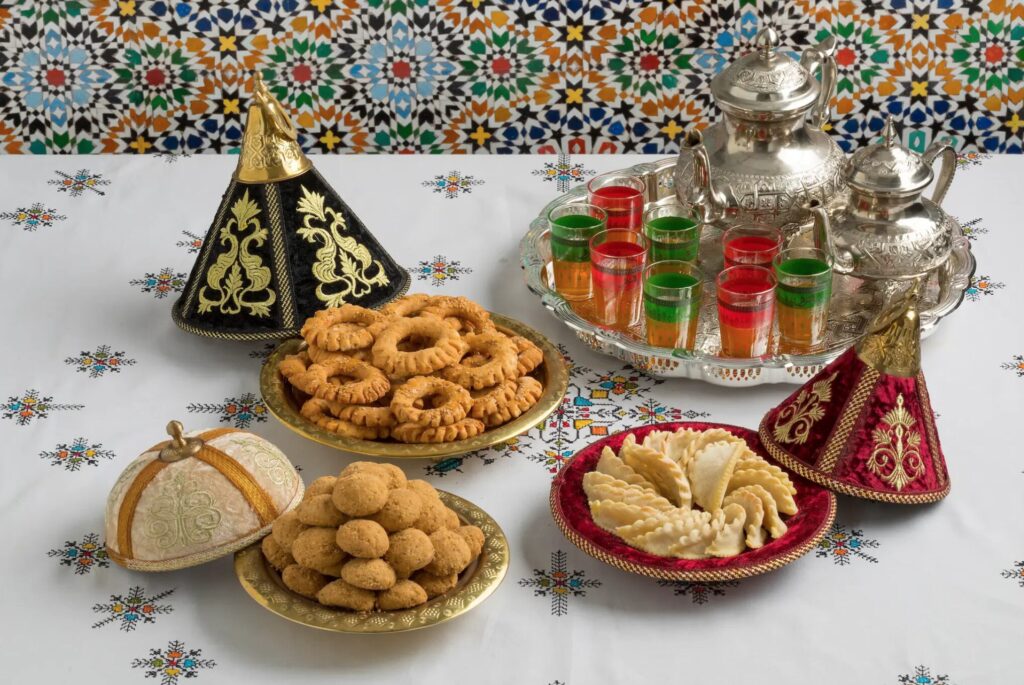
Sweets in Morocco are more than a treat—they’re a symbol of celebration, generosity, and cultural heritage. Whether served during weddings, religious festivals like Eid al-Fitr, or to welcome guests, desserts are a way to express love and tradition.
The foundation of many traditional Moroccan sweets lies in natural, wholesome ingredients: almonds, sesame seeds, orange blossom water, dates, cinnamon, and honey. These flavors trace their origins back to ancient Amazigh, Arab, and Andalusian culinary traditions, resulting in desserts that are both simple and sophisticated.
You’ll find regional variations across the country—from the spiced pastries of Fes to the syrup-soaked delights of Marrakech—each one telling a story of its people and place.
Must-Taste Moroccan Desserts and Where to Find Them
1. Chebakia – The Star of Ramadan
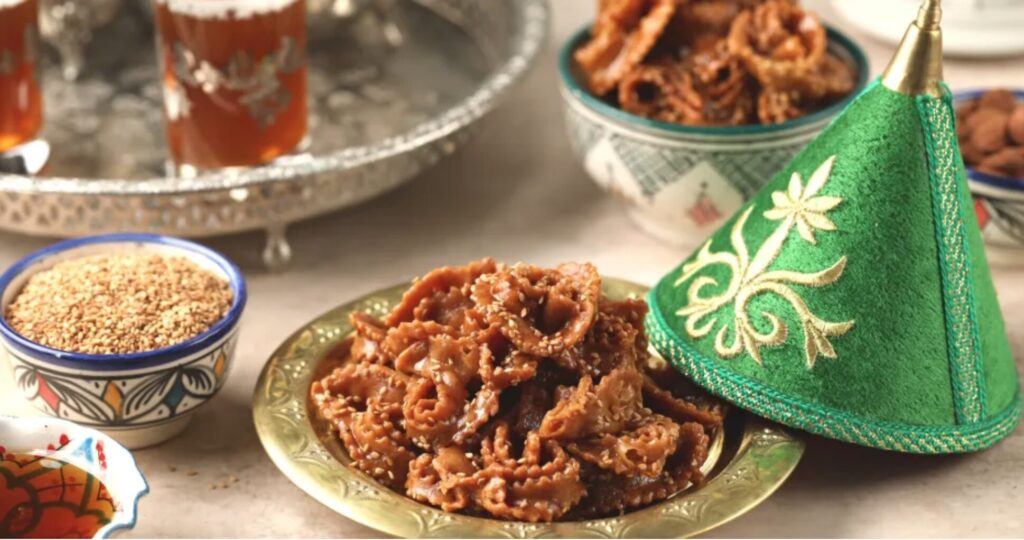
This sesame-honey cookie is twisted into a flower shape, deep-fried, and soaked in fragrant syrup. It’s especially popular during Ramadan, often served with harira soup to break the fast. Try it in local bakeries in Fes or at food stalls in Casablanca during the holy month.
2. Ghriba – Crumbly and Comforting

Ghriba are shortbread-like cookies made with almonds or coconut, and dusted with powdered sugar. These are often served with mint tea as a welcome snack in Moroccan homes. Head to Essaouira‘s medina for some of the best artisan varieties.
3. Sellou – A Nutrient-Packed Power Sweet
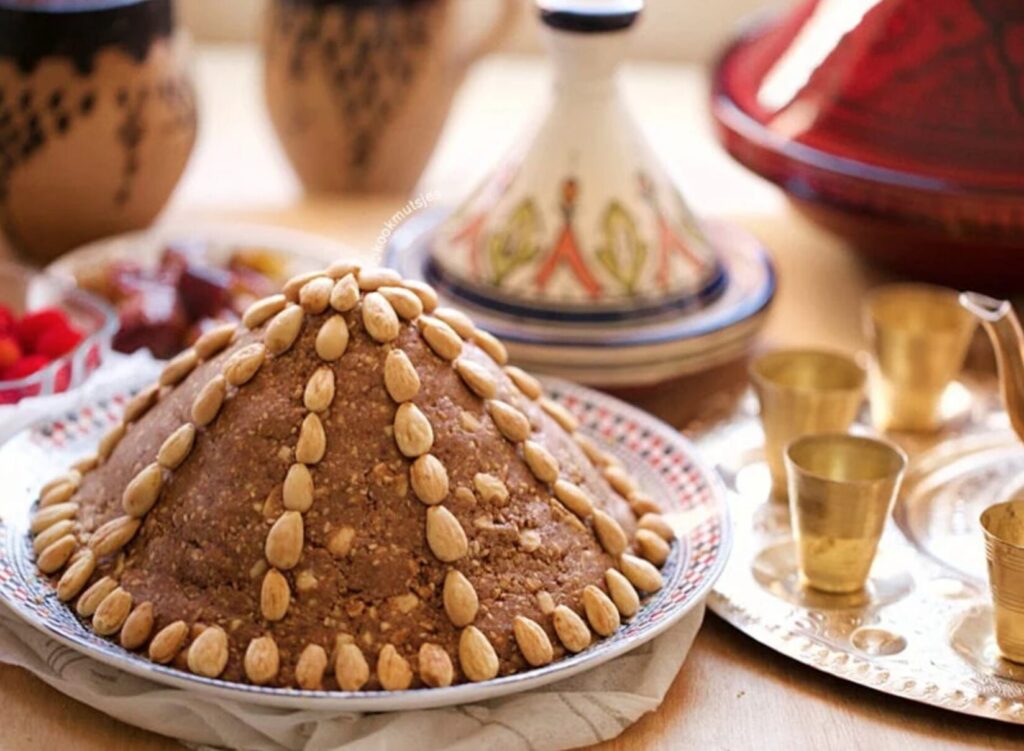
A blend of roasted flour, almonds, sesame seeds, honey, and spices, sellou is typically eaten during celebrations and after childbirth for its nourishing properties. You can find it beautifully packaged in sweet shops in Marrakech.
4. Kaab el Ghazal – Gazelle Horns with a Story
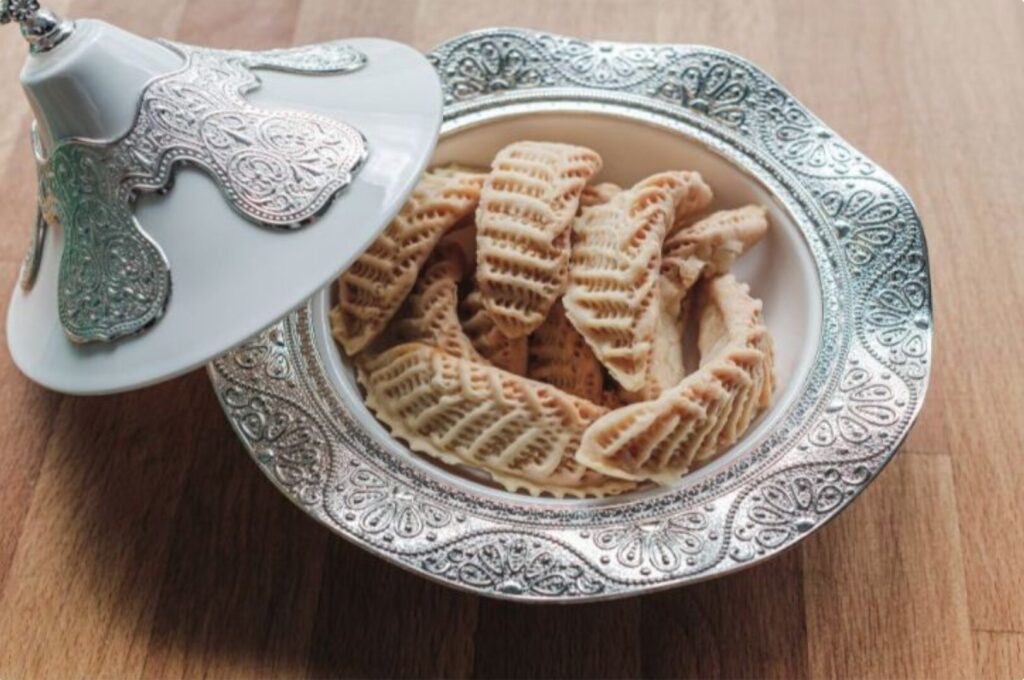
These crescent-shaped pastries filled with almond paste and orange blossom water are as poetic as their name. You’ll see them served at weddings and special ceremonies. Try them at pâtisseries in Rabat or the elegant tearooms of Meknes.
5. Dates Stuffed with Almond Paste
A simple, naturally sweet dessert, these stuffed dates are often gifted during holidays. They’re especially popular in desert towns like Erfoud, known as the date capital of Morocco.
Tips for Tasting Moroccan Sweets Like a Local
Don’t Skip the Mint Tea
In Morocco, no sweet is complete without a glass of traditional mint tea. It’s often served as part of the dessert experience and symbolizes hospitality and friendship.
Visit Local Markets Early
For the freshest options, head to the market in the morning. Vendors will proudly display homemade sweets, and you can often sample before you buy.
Ask About Ingredients
If you have dietary restrictions or allergies, ask whether sweets contain gluten, dairy, or nuts. Many traditional Moroccan desserts are naturally gluten-free but do contain nuts and honey.
Bring Sweets Home
Many sweet shops offer vacuum-sealed packages perfect for travel. Chebakia and sellou travel well and make thoughtful souvenirs for friends and family.
Traveler Tales: Sweet Discoveries Across Morocco
Maria from Italy – A Culinary Class in Marrakech
“During my cooking class in Marrakech, we made kaab el ghazal from scratch. It was so delicate! I’d never realized how much symbolism went into Moroccan sweets. It gave me a whole new appreciation for the culture.”
Ethan from the UK – Ramadan in Chefchaouen
“I visited Chefchaouen during Ramadan and was invited to break fast with a local family. They served homemade chebakia, sellou, and mint tea. It felt incredibly personal, like I was part of something ancient and sacred.”
Aiko from Japan – Exploring Fes with a Sweet Tooth
“In Fes, I followed the scent of orange blossom to a tiny shop that only sold ghriba. The owner had been baking there for over 40 years. It was the best cookie I’ve ever had.”
When and Where to Enjoy Moroccan Sweets
Spring Festivals (March–May)
Springtime is filled with celebrations like the Almond Blossom Festival in Tafraoute, where sweets take center stage. Many seasonal desserts use almond and floral ingredients.
Ramadan and Eid (Dates vary annually)
These religious holidays offer the richest array of traditional Moroccan sweets. Markets and bakeries overflow with fresh chebakia, sellou, and more. Even if you’re not observing the fast, you can still enjoy the festive atmosphere.
Autumn Harvest (September–November)
This season brings an abundance of dates, nuts, and honey—perfect ingredients for Morocco’s famous sweets. Travel to the Ziz Valley or Errachidia during the date harvest for a truly authentic tasting experience.
Frequently Asked Questions About Moroccan Sweets
What are the most famous traditional Moroccan sweets?
Some of the most iconic Moroccan sweets include chebakia, kaab el ghazal, ghriba, sellou, and stuffed dates. These are often served during holidays, weddings, and special gatherings.
Are Moroccan sweets vegetarian or vegan?
Many Moroccan sweets are vegetarian, though not all are vegan. Honey is a common ingredient, and some sweets may use butter or eggs. Always ask if you have dietary preferences.
Can I take Moroccan sweets home with me?
Yes! Many sweet shops offer beautifully boxed sweets that are perfect for travel. Just make sure they’re sealed and check customs regulations in your country.
Are there regional differences in Moroccan desserts?
Absolutely. Coastal cities like Essaouira may use more coconut, while desert areas use dates and nuts. Fes is known for refined, elegant sweets influenced by Andalusian cuisine.
Where can I learn to make Moroccan sweets?
Many riads and cooking schools in Marrakech, Fes, and Essaouira offer dessert-making workshops. It’s a fun, hands-on way to connect with Moroccan culture.
Conclusion: Savor the Past, Taste the Present
Traditional Moroccan sweets: the taste of past and present is not just a culinary delight—it’s a journey into Morocco’s heart. Each bite carries stories of family, faith, and festivity. From the simplest date to the most intricate almond pastry, Moroccan sweets connect the old with the new in the most delicious way possible.
If you’re planning your Moroccan adventure, don’t just sightsee—taste your way through the medinas, markets, and homes of this extraordinary country.
Want more local tips, recipes, or places to explore?
– Browse more guides on Skies of Morocco or start planning your sweet Moroccan escape today.


